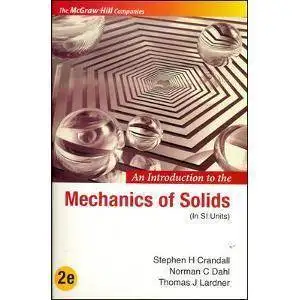No products in the cart.
Return To Shop
Login / Register
Login
Register
Menu
Categories
- Corporate Library / Children Books
- Javascript
- IIT JEE
- Biological Sciences
- Made Easy Books: ESE
- Self Help / Personal Growth / General
- Religion
- Competitive Examinations, Used or Second Hand Books - High Quality, Upto 50% Savings
- MBA Books, Used or Second Hand Books - High Quality, Upto 50% Savings
- Environmental Engineering Books, Used or Second Hand Books - High Quality, Upto 50% Savings
- 185
- College Text Books, Delhi University Books, Law Books
- Children Books, Classic Series, V&S Publishers
- College Text Books, Computer Science Books, Used or Second Hand Books - High Quality, Upto 50% Savings
- 1595
- Miscellaneous/General Books / Miscellaneous / General, Software Programming, Software Programming / J2Ee, Used or Second Hand Books - High Quality, Upto 50% Savings
- CBSE Books, Chemistry Books, NCERT, School Books / Academic School Books, School Books / Academic School Books / School
- 674
- 329
- Computer Science Books, Computers and Information Technology / Programming Languages, Java, Software Programming
- 131
- Used or Second Hand Books - High Quality, Upto 50% Savings
- Software Applications
- Microsoft Visual Studio
- Body,Mind, Spirit
- Children Tales
- Corporate Library / Technical or Software
- Telugu Books
- 230
- College Text Books, Management Books
- 460
- Health & Fitness, Meditation, Nutrition, V&S Publishers
- Children Books, Children Hobbies, Children Stories, Corporate Library / Children Books, Other
- 599
- 249
- 1020
- School Books / Academic School Books, School Books / Academic School Books / School
- General Engineering Books, Mechanical Engineering Books
- Amity University ASET Books, Delhi University Books, Electrical Engineering Books, Used or Second Hand Books - High Quality, Upto 50% Savings
- Amity University ASET Books, Civil Engineering Books, College Text Books, UPTU & AKTU Books, Used or Second Hand Books - High Quality, Upto 50% Savings
- 1
- College Text Books, Self Help, Spiritual Books
- 1099
- CBSE Books
- Astrology
- C & C++
- Databases
- Hinduism
- Body
- Career Management
- 280
- Management Books, MBA Books, MBA College Books
- 168
- Electronics And Communication, Used or Second Hand Books - High Quality, Upto 50% Savings
- Best Deals: Top Selling Books, College Text Books, Competitive Examinations, Used or Second Hand Books - High Quality, Upto 50% Savings
- Diseases and Common Ailments, Medicinal Books, V&S Publishers
- Best Deals: Top Selling Books, College Text Books, Delhi University Books, Electrical Engineering Books
- 352
- Mechanical Engineering, Used or Second Hand Books - High Quality, Upto 50% Savings
- CBSE Books, NCERT, Used or Second Hand Books - High Quality, Upto 50% Savings
- Amity University ASET Books, Computer Science Books, Computers and Information Technology / Programming Languages, Used or Second Hand Books - High Quality, Upto 50% Savings
- Accounting, Children Books, ECE, Economics, Electronics Telecom, Used or Second Hand Books - High Quality, Upto 50% Savings
- College Text Books, Computer Science Books, Delhi University Books, General Engineering Books, Used or Second Hand Books - High Quality, Upto 50% Savings
- Computer Science Engineering, ECE, Electronics Telecom, Used or Second Hand Books - High Quality, Upto 50% Savings
- Business
- Children Stories
- Microsoft Sql Server
- Electronics Telecom, ECE
- Psychology
- GATE
- https://pustakkosh.com/products/Five-Point-Someone-What-Not-To-Do-at-IIT-by-Chetan-Bhagat-p252203805
- Class- 9th books
- 499
- 799
- 120
- Children Books, Children Hobbies, College Text Books, Corporate Library / Children Books
- 304
- Children science library, Corporate Library / Children Books, Encyclopedia, V&S Publishers
- Biotechnology Books, Used or Second Hand Books - High Quality, Upto 50% Savings
- 699
- 595
- CBSE Books, NCERT, School Books, School Books / Academic School Books, School Books / Academic School Books / School
- Children Books, ECE, Electronics Telecom, Software Programming / Mobile and Wireless Books, Used or Second Hand Books - High Quality, Upto 50% Savings
- College Text Books, Computer Science Books, Other, Used or Second Hand Books - High Quality, Upto 50% Savings
- 560
- Algorithms Books Online, Computer Science Books, Computer Science Engineering, Electronics Communication Books, Used or Second Hand Books - High Quality, Upto 50% Savings
- Mechanical Engineering Books
- V&S Publishers
- Certification Guides
- Computer Science Engineering
- Spiritual Books
- Software Programming / Software Engineering
- https://pustakkosh.com/products/Heat-and-Mass-Transfer-Fundamentals-and-Applications-SIE-Paperback-Yunus-A-Cengel-Afshin-J-Ghajar-Pustakkosh-com-p133045812
- Novels, Used or Second Hand Books - High Quality, Upto 50% Savings
- 700
- Children Books, Children Stories, Gift Items
- 174
- Children Books, Children Stories, Children Tales, Corporate Library / Children Books, Gift Items
- Biotechnology Books, College Text Books, Delhi University Books
- 695
- 825
- Amity University ASET Books, Electrical and Electronics Engineering (EEE), Electronics Communication Books, Electronics Engineering Books, Used or Second Hand Books - High Quality, Upto 50% Savings
- Children Books, ECE, Electronics Telecom, Used or Second Hand Books - High Quality, Upto 50% Savings
- Khanna publication, Electrical Engineering Books, UPTU & AKTU Books, Used or Second Hand Books - High Quality, Upto 50% Savings
- Economics, Management Books, MBA Books, MBA College Books, Used or Second Hand Books - High Quality, Upto 50% Savings
- College Text Books, Novels, Used or Second Hand Books - High Quality, Upto 50% Savings
- Electronics And Communication, Electronics Communication Books, Electronics Engineering Books
- Civil Engineering Books, Delhi University Books, Miscellaneous/General Books / General
- Miscellaneous/General Books / General
- Games
- Corporate Library
- Software Development
- Civil
- Mind
- Reference / Curiosities & Wonders
- 250
- Management Books, Used or Second Hand Books - High Quality, Upto 50% Savings
- 173
- 240
- 658
- Children Books, Motivational, Student Development, V&S Publishers
- Electrical Engineering Books, Mechanical Engineering Books, UPTU & AKTU Books, Used or Second Hand Books - High Quality, Upto 50% Savings
- Amity Management books, Management Books, Mathematics Books, MBA Books, Used or Second Hand Books - High Quality, Upto 50% Savings
- General Engineering Books, Used or Second Hand Books - High Quality, Upto 50% Savings
- Civil Engineering Books, College Text Books, Laxmi Publication, Used or Second Hand Books - High Quality, Upto 50% Savings
- 645
- Amity University ASET Books, Computer Science Books, Delhi University Books, Electronics Communication Books, Electronics Engineering Books, Used or Second Hand Books - High Quality, Upto 50% Savings
- 690
- Children’s Book
- Children Hobbies
- General
- Mechanical Engineering
- Applied Sciences
- UPSC Competition Books
- CAD
- Class- 10th class
- Children Books, Children Stories, College Text Books, Gift Items
- 550
- 395
- Health & Fitness, Meditation, V&S Publishers, Yoga
- 128
- English Novel, Motivational, Self Help / Personal Growth / General, Self Improvement, V&S Publishers
- Electrical Engineering Books, Used or Second Hand Books - High Quality, Upto 50% Savings
- General Engineering Books, Physics Books, Used or Second Hand Books - High Quality, Upto 50% Savings
- Law, Used or Second Hand Books - High Quality, Upto 50% Savings
- CBSE Books, College Text Books, NCERT, School Books
- ECE, Electronics Telecom, Engineering Design, Used or Second Hand Books - High Quality, Upto 50% Savings
- 545
- Amity University ASET Books, Delhi University Books, General Engineering Books, Used or Second Hand Books - High Quality, Upto 50% Savings
- 1049
- Miscellaneous/General Books / Miscellaneous/General
- Language Learning
- Software Engineering
- Cs & It
- Self Help
- Software Programming / J2Ee
- Housekeeping
- School Books, Used or Second Hand Books - High Quality, Upto 50% Savings
- 300
- 795
- Children Books, Reference / Curiosities & Wonders, V&S Publishers
- Children Books, Children Hobbies, Children Stories, Corporate Library / Children Books
- 725
- Computer Science Books, Electronics Communication Books, Used or Second Hand Books - High Quality, Upto 50% Savings
- Computer Science Books, Computers and Information Technology / Programming Languages, Java, Software Programming, Used or Second Hand Books - High Quality, Upto 50% Savings
- Electrical and Electronics Engineering (EEE), Electronics Communication Books, Electronics Engineering Books
- Algorithms Books Online, Computer Science Books, Computer Science Engineering, Computers and Information Technology / Programming Languages
- 118
- English Language Books, Language, School Books / Academic School Books, School Books / Academic School Books / School, Used or Second Hand Books - High Quality, Upto 50% Savings
- 199
- Computer Science Books, MySQL, Programming Languages / SQL
- Children Books, College Text Books, S.Chand Publication, Used or Second Hand Books - High Quality, Upto 50% Savings
- Electronics Engineering Books
- Psychology
- Miscellaneous/General Books
- Web Development
- English Language & Literature / Psychology
- Spirit / Astrology
- Biographies
- 100
- College Text Books, Used or Second Hand Books - High Quality, Upto 50% Savings
- English Novel, Novels, Other
- General Engineering Books, Miscellaneous/General Books / General, Used or Second Hand Books - High Quality, Upto 50% Savings
- College Text Books, School Books / Academic School Books
- Family and Relationships, Hindi Novel, V&S Publishers
- Electrical Engineering Books, Electronics Communication Books, Electronics Engineering Books
- 440
- College Text Books, Mathematics Books
- Electrical Engineering Books, Electronics Communication Books, Electronics Engineering Books, Used or Second Hand Books - High Quality, Upto 50% Savings
- Amity University ASET Books, Used or Second Hand Books - High Quality, Upto 50% Savings
- Amity University ASET Books, Best Deals: Top Selling Books, Children Books, College Text Books
- Mathematics, Mathematics Books, Other
- IIT JEE, Physics Books, Used or Second Hand Books - High Quality, Upto 50% Savings
- Comics
- Delhi University Books
- Business and Motivation
- MBA College Books
- Children Books
- Computer Security
- CAM Books
- Hindi Poetry
- 785
- 360
- Computers and Information Technology / Operating Systems, Used or Second Hand Books - High Quality, Upto 50% Savings
- Academic Book, Children Books, V&S Publishers
- Law, Law Books, Uncategorized
- Children Books, Class- 10th class, Class- 9th books, Student Development, V&S Publishers
- Computers and Information Technology, Used or Second Hand Books - High Quality, Upto 50% Savings
- 150
- Management Books, Mathematics Books, MBA Books, Used or Second Hand Books - High Quality, Upto 50% Savings
- 104
- 584
- 565
- 157
- 1130
- School Books
- Novels
- Microsoft Visual Studio.Net
- English Language & Literature
- Self Help / Motivationl
- Software Programming / Mobile and Wireless Books
- Family and Relationships
- 390
- 530
- Civil Engineering Books, Used or Second Hand Books - High Quality, Upto 50% Savings
- 225
- Mathematics Books, School Books, Used or Second Hand Books - High Quality, Upto 50% Savings
- Biology Books, Biotechnology Books, Children Books, College Text Books, Used or Second Hand Books - High Quality, Upto 50% Savings
- Mathematics, Mathematics Books, Used or Second Hand Books - High Quality, Upto 50% Savings
- College Text Books, Competitive Examinations, Used or Second Hand Books - High Quality, Upto 50% Savings
- Language, Other
- Miscellaneous/General Books / Miscellaneous / General / General, Used or Second Hand Books - High Quality, Upto 50% Savings
- Uncategorized, Biological Sciences, Biology Books, Biotechnology Books
- General Engineering Books, MBA Books, Mechanical Engineering Books, Used or Second Hand Books - High Quality, Upto 50% Savings
- Corporate Library, Corporate Library / Novels and Fiction
- Computer Science Books, Computer Security, Used or Second Hand Books - High Quality, Upto 50% Savings
- Arihant, Best Deals: Top Selling Books, College Text Books, Competitive Examinations, GATE, Made Easy Books: ESE, Other, UPSC Competition Books
- General Engineering Books
- Wireless
- Database Management
- Java
- S.Chand Publication
- New Arrivals
- Self Help / Personal Growth / Happiness
- Mathematics Books, Used or Second Hand Books - High Quality, Upto 50% Savings
- Chemistry Books, IIT JEE, School Books / Academic School Books, School Books / Academic School Books / School
- Electrical Engineering Books, Mechanical Engineering Books, Used or Second Hand Books - High Quality, Upto 50% Savings
- Electrical Engineering Books, Electronics Engineering Books, Mechanical Engineering Books, Used or Second Hand Books - High Quality, Upto 50% Savings
- Amity Management books, Economics, Management Books, Used or Second Hand Books - High Quality, Upto 50% Savings
- Diseases and Common Ailments, Health & Fitness, V&S Publishers
- Computer Science Books, Computer Science Engineering, Used or Second Hand Books - High Quality, Upto 50% Savings
- Accounting, Economics, Management Books, MBA Books, MBA College Books, Used or Second Hand Books - High Quality, Upto 50% Savings
- 137
- Computer Science Books, Mathematics Books
- 669
- Amity University ASET Books, Mathematics, Mathematics Books
- 1125
- CAD, CAM Books, ECE, Electronics Telecom, Used or Second Hand Books - High Quality, Upto 50% Savings
- Cookbook
- Management Books
- Html, Sgml
- Misc
- Main Cat1
- Miscellaneous/General Books / Miscellaneous / General / General
- Children science library
- Author Shyam Sundar Pathak
- Children Books, Children Hobbies, Children Stories, College Text Books
- 370
- Children Books, College Text Books, Gift Items
- Alternative Therapy, Health & Fitness, V&S Publishers
- Children Books, Engineering Design, Used or Second Hand Books - High Quality, Upto 50% Savings
- Computer Science Books, General Engineering Books, Used or Second Hand Books - High Quality, Upto 50% Savings
- 110
- Delhi University Books, Economics, MBA Books, Miscellaneous/General Books
- Mechanical Engineering, Mechanical Engineering Books, Used or Second Hand Books - High Quality, Upto 50% Savings
- CBSE Books, NCERT, School Books, Used or Second Hand Books - High Quality, Upto 50% Savings
- Mobile / Wireless, Software Programming / Mobile and Wireless Books, Used or Second Hand Books - High Quality, Upto 50% Savings
- Computers and Information Technology, Miscellaneous/General Books / General, Software Programming, Used or Second Hand Books - High Quality, Upto 50% Savings
- Children Books, Electronics And Communication, Used or Second Hand Books - High Quality, Upto 50% Savings
- 900
- Bloggggggggggggggggggggggggggggggggggggggggggggggggggg
- Fiction
- Environmental Engineering Books
- Chemical Engineering
- Yoga
- Laxmi Publication
- Fun
- College Text Books, Novels
- 525
- Biology Books, Used or Second Hand Books - High Quality, Upto 50% Savings
- Beauty Care, Medicinal Books, V&S Publishers
- Chemistry Books, School Books, Used or Second Hand Books - High Quality, Upto 50% Savings
- English Novel, Self Help / Personal Growth / Happiness, V&S Publishers
- Corporate Library / Technical or Software, Used or Second Hand Books - High Quality, Upto 50% Savings
- Civil Engineering Books, College Text Books, Delhi University Books, Used or Second Hand Books - High Quality, Upto 50% Savings
- Amity University ASET Books, Civil Engineering Books, Delhi University Books, Mechanical Engineering Books, Used or Second Hand Books - High Quality, Upto 50% Savings
- 649
- 610
- 299
- 500
- 569
- Competitive Examinations, Miscellaneous/General Books, Used or Second Hand Books - High Quality, Upto 50% Savings
- Electrical and Electronics Engineering (EEE)
- Mobile
- Android, IoS
- Php
- Free Online e-Books
- Astrology / Palmistry
- Medicinal Books
- 275
- 1495
- Engineering Design, Used or Second Hand Books - High Quality, Upto 50% Savings
- 475
- Competitive Examinations, S.Chand Publication, Used or Second Hand Books - High Quality, Upto 50% Savings
- Career Management, General, V&S Publishers
- ECE, Electronics Telecom, Mechanical Engineering Books, Used or Second Hand Books - High Quality, Upto 50% Savings
- Arihant, College Text Books, GATE, Made Easy Books: ESE, UPSC Competition Books
- 594
- Computer Science Books, School Books
- 540
- Amity University ASET Books, College Text Books, Delhi University Books, UPTU & AKTU Books, Used or Second Hand Books - High Quality, Upto 50% Savings
- MBA Books, MBA College Books
- Computers and Information Technology / Programming, Computers and Information Technology / Programming Languages, Used or Second Hand Books - High Quality, Upto 50% Savings
- Health
- Best Deals: Top Selling Books
- Mythology
- Software Programming
- Programming Languages / SQL
- Encyclopedia
- Khanna publication
- 625
- Civil Engineering Books, Electrical and Electronics Engineering (EEE), Electrical Engineering Books, Electronics Communication Books, Mathematics Books, Mechanical Engineering Books
- 145
- Academic Book, Children Books, Competitive Examinations, V&S Publishers
- Children Books, College Text Books, Used or Second Hand Books - High Quality, Upto 50% Savings
- Misc, Used or Second Hand Books - High Quality, Upto 50% Savings
- 175
- Chemistry Books, School Books / Academic School Books, School Books / Academic School Books / School, Used or Second Hand Books - High Quality, Upto 50% Savings
- General Engineering Books, Mechanical Engineering, Mechanical Engineering Books, Used or Second Hand Books - High Quality, Upto 50% Savings
- CBSE Books, NCERT, School Books, School Books / Academic School Books / School
- Physics Books, School Books, Used or Second Hand Books - High Quality, Upto 50% Savings
- 455
- Accounting, Children Books, College Text Books, Economics, Used or Second Hand Books - High Quality, Upto 50% Savings
- Civil Engineering Books, Mechanical Engineering Books, Used or Second Hand Books - High Quality, Upto 50% Savings
- Electrical Engineering Books
- Corporate Library / Novels and Fiction
- J2Ee
- Economics
- Meditation
- Computers and Information Technology / Operating Systems
- Fact
- Corporate Library / Novels and Fiction, Used or Second Hand Books - High Quality, Upto 50% Savings
- College Text Books, English Novel, Novels
- 750
- Children Stories, V&S Publishers
- Children Books, Children Stories, College Text Books
- Fact, Fun, Magic and Kids Books, V&S Publishers
- Electrical and Electronics Engineering (EEE), Electronics Communication Books, Electronics Engineering Books, Used or Second Hand Books - High Quality, Upto 50% Savings
- 575
- 620
- CAD, CAM Books, College Text Books, Used or Second Hand Books - High Quality, Upto 50% Savings
- Electrical Engineering Books, Electronics Engineering Books, Laxmi Publication, Mechanical Engineering Books, Used or Second Hand Books - High Quality, Upto 50% Savings
- Children Books, Civil Engineering Books, College Text Books, Used or Second Hand Books - High Quality, Upto 50% Savings
- English Language & Literature / Psychology, Used or Second Hand Books - High Quality, Upto 50% Savings
- Electrical and Electronics Engineering (EEE), Electronics Communication Books, Electronics Engineering Books, Electronics Telecom
- Mechanical Engineering, Mechanical Engineering Books
- Amity University ASET Books
- Web Development
- Biology Books
- Perl
- Engineering e-books and notes
- Mobile / Wireless
- Home remedies
- Amity Management books, Delhi University Books, Management Books, MBA Books, MBA College Books, Used or Second Hand Books - High Quality, Upto 50% Savings
- Biology Books, Other, School Books
- Amity University ASET Books, Chemistry Books, IIT JEE, School Books / Academic School Books, School Books / Academic School Books / School
- College Text Books, Law
- Chemistry Books, Corporate Library / Children Books, School Books, Used or Second Hand Books - High Quality, Upto 50% Savings
- Home remedies, Medicinal Books, V&S Publishers
- College Text Books, Computer Science Books, MBA Books, Mechanical Engineering Books, Used or Second Hand Books - High Quality, Upto 50% Savings
- Arihant, Best Deals: Top Selling Books, CBSE Books, Competitive Examinations, GATE, IIT JEE, Made Easy Books: ESE, NCERT, UPSC Competition Books
- Uncategorized, Electronics And Communication, Electronics Engineering Books
- 320
- Amity University ASET Books, College Text Books, Computer Science Books, Delhi University Books
- Computer Science Engineering, Used or Second Hand Books - High Quality, Upto 50% Savings
- Amity University ASET Books, Delhi University Books, Mathematics, Mathematics Books, Used or Second Hand Books - High Quality, Upto 50% Savings
- Amity University ASET Books, College Text Books, Electrical & Electronics Engineering, Electrical Engineering Books, Used or Second Hand Books - High Quality, Upto 50% Savings
- History
- Amity Management books
- NCERT, CBSE Books
- Computers and Information Technology
- MySQL
- Software Programming / C#
- Biographies, Motivational, V&S Publishers
- 600
- College Text Books, Self Help / Motivationl, Spiritual Books
- 295
- 247
- Computer Science Books, Computers and Information Technology / Programming Languages, Used or Second Hand Books - High Quality, Upto 50% Savings
- 315
- College Text Books, Computer Science Books
- 80
- Amity University ASET Books, Mechanical Engineering, UPTU & AKTU Books, Used or Second Hand Books - High Quality, Upto 50% Savings
- 1295
- 549
- Best Deals: Top Selling Books, Electronics Engineering Books, Mechanical Engineering Books, Used or Second Hand Books - High Quality, Upto 50% Savings
- 794
- 486
- Mathematics Books
- English Novel
- Biotechnology Books
- Finance
- Health & Fitness
- Operating Systems / Windows
- Magic and Kids Books
- Computer Science Books, Used or Second Hand Books - High Quality, Upto 50% Savings
- Law Books, Used or Second Hand Books - High Quality, Upto 50% Savings
- 207
- 138
- Children Books, English Novel, Novels, Other, School Books
- Computer Science, Information Technology and Computers, V&S Publishers
- Computer Science Engineering, Electrical and Electronics Engineering (EEE), Electronics Communication Books, Electronics Engineering Books, Used or Second Hand Books - High Quality, Upto 50% Savings
- Other, Psychology, Psychology, Used or Second Hand Books - High Quality, Upto 50% Savings
- 720
- Accounting, Amity Management books, Delhi University Books, Economics, Management Books, MBA Books, Other, Used or Second Hand Books - High Quality, Upto 50% Savings
- 130
- Amity University ASET Books, Electrical Engineering Books, Mechanical Engineering Books, Used or Second Hand Books - High Quality, Upto 50% Savings
- Computer Science Books, Computers and Information Technology / Programming Languages, Software Programming, Used or Second Hand Books - High Quality, Upto 50% Savings
- 745
- Computer Science Books, Computer Science Engineering
- UPTU & AKTU Books
- Ms Sql Server
- English Language Books
- C++
- Information Technology and Computers
- Computers and Information Technology / Programming
- Classic Series
- Delhi University Books, Used or Second Hand Books - High Quality, Upto 50% Savings
- 1930
- 1339
- Electronics Engineering Books, Used or Second Hand Books - High Quality, Upto 50% Savings
- 1400
- Language Learning, Marathi Books, V&S Publishers
- Mechanical Engineering Books, Used or Second Hand Books - High Quality, Upto 50% Savings
- 895
- Computer Science Books, Miscellaneous/General Books / Miscellaneous / General / General, Used or Second Hand Books - High Quality, Upto 50% Savings
- Chemistry Books, Miscellaneous/General Books / Miscellaneous / General, Used or Second Hand Books - High Quality, Upto 50% Savings
- 675
- 381
- Mathematics, Mathematics Books
- Computer Science Books, Programming Languages, Software Programming, Used or Second Hand Books - High Quality, Upto 50% Savings
- Online eBooks
- Electronics Telecom
- Civil Engineering Books
- Electronics And Communication
- main cat2
- Algorithms Books Online
- Alternative Therapy
- College Text Books, Other
- 603
- Anuradha Prakashan, Hindi Book, Hindi Novel
- Business Management, Management Books, V&S Publishers
- School Books, School Books / Academic School Books
- 535
- Law Books, Management Books
- 775
- School Books / Academic School Books, Used or Second Hand Books - High Quality, Upto 50% Savings
- 220
- Children Books, Law, Used or Second Hand Books - High Quality, Upto 50% Savings
- Computer Science Books, Computer Science Engineering, Mechanical Engineering, Mechanical Engineering Books, Used or Second Hand Books - High Quality, Upto 50% Savings
- Amity University ASET Books, Electronics Communication Books, Electronics Engineering Books, Used or Second Hand Books - High Quality, Upto 50% Savings
- C & C++, Computer Science, Computer Science Books, Uncategorized
- 2271
- Chemistry Books
- Mathematics
- MBA Books
- Law Books
- Women Development
- Food Technology
- Business Management
- 875
- 195
- 350
- 187
- Electrical Engineering Books, Electronics Engineering Books, Other
- Meditation, V&S Publishers, Yoga
- Electrical Engineering Books, UPTU & AKTU Books
- 999
- 480
- Chemistry Books, School Books / Academic School Books, School Books / Academic School Books / School
- Civil Engineering Books, Laxmi Publication, Mechanical Engineering Books, Used or Second Hand Books - High Quality, Upto 50% Savings
- 285
- Computer Science Books, Computers and Information Technology / Programming Languages, Software Programming / Software Engineering
- 1045
- Children Books, Children Books
- Computer Science Books
- Asp.Net
- Economics,Accounting
- Programming Languages
- Computer Science
- Motivational
- Beauty Care
- Electronics Communication Books, Used or Second Hand Books - High Quality, Upto 50% Savings
- 193
- 465
- Computer Science Books, Computers and Information Technology / Programming Languages
- 495
- English Novel, V&S Publishers
- 325
- 310
- Uncategorized, Mathematics, Mathematics Books
- C++, Computer Science Books, Software Programming, Software Programming / C & C++
- Children Books, ECE, Economics, Electronics Telecom, Used or Second Hand Books - High Quality, Upto 50% Savings
- 865
- Miscellaneous/General Books / Miscellaneous / General / General, Software Programming, Used or Second Hand Books - High Quality, Upto 50% Savings
- College Text Books, Mechanical Engineering, Mechanical Engineering Books, Used or Second Hand Books - High Quality, Upto 50% Savings
- eCourses
- ECE
- SQL, MySQL
- Web Programming
- Other
- Accounting
- Bengali Books
- 190
- 375
- Amity Management books, Delhi University Books, Management Books, MBA Books, UPTU & AKTU Books, Used or Second Hand Books - High Quality, Upto 50% Savings
- Motivational, Self Help / Motivationl / Inspirational, V&S Publishers
- School Books, School Books / Academic School Books, School Books / Academic School Books / School
- 749
- 590
- 975
- 210
- 399
- Children Books, Computers and Information Technology / Operating Systems, Used or Second Hand Books - High Quality, Upto 50% Savings
- Economics, Management Books, MBA Books, MBA College Books
- MBA Books, School Books / Academic School Books, School Books / Academic School Books / School
- Children Books, College Text Books, Economics, Used or Second Hand Books - High Quality, Upto 50% Savings
- 356
- School Books / Academic School Books / School
- Academic School Books
- C#
- Mobile
- Parenting
- Miscellaneous/General Books / Miscellaneous / General
- Self Help / Motivationl / Inspirational
- College Text Books, Competitive Examinations, School Books
- Computer Science Engineering, Computer Science, Computer Science Books, Computers and Information Technology / Operating Systems, Used or Second Hand Books - High Quality, Upto 50% Savings
- 330
- Physics Books, School Books
- Compatative Book, Used or Second Hand Books - High Quality, Upto 50% Savings
- English Novel, Parenting, V&S Publishers
- Civil Engineering Books, College Text Books, Delhi University Books, General Engineering Books
- Electrical Engineering Books, Electronics Communication Books, Used or Second Hand Books - High Quality, Upto 50% Savings
- General Engineering Books, Software Programming, Used or Second Hand Books - High Quality, Upto 50% Savings
- 679
- Laxmi Publication, Mathematics, Mathematics Books
- Electronics Communication Books, Electronics Engineering Books, Used or Second Hand Books - High Quality, Upto 50% Savings
- 204
- Physics Books, Used or Second Hand Books - High Quality, Upto 50% Savings
- Computers and Information Technology / Programming Languages
- Novels and Fiction
- Competitive Examinations
- Database Management
- Computer Learning
- Student Development
- Academic Book
- Amity University ASET Books, Electrical Engineering Books, General Engineering Books, UPTU & AKTU Books, Used or Second Hand Books - High Quality, Upto 50% Savings
- Management Books, MBA College Books, Used or Second Hand Books - High Quality, Upto 50% Savings
- MBA College Books, Used or Second Hand Books - High Quality, Upto 50% Savings
- Miscellaneous/General Books / General, Miscellaneous/General Books / Miscellaneous / General / General
- Management Books, Mathematics Books, MBA Books
- Health & Fitness, V&S Publishers, Women Development
- Management Books, MBA Books, MBA College Books, Used or Second Hand Books - High Quality, Upto 50% Savings
- 430
- Chemistry Books, General Engineering Books, Used or Second Hand Books - High Quality, Upto 50% Savings
- Law Books, Miscellaneous/General Books / Miscellaneous/General
- Amity University ASET Books, Electrical Engineering Books, Electronics Communication Books, Electronics Engineering Books, Used or Second Hand Books - High Quality, Upto 50% Savings
- 263
- 960
- Corporate Library, English Language Books, English Novel, Miscellaneous/General Books, Novels, Other
- OSWAAL BOOKS
- Electronics Communication Books
- Javascript
- Autobiography
- Gift Items
- Compatative Book
- Dictionaries / English Improvement
- College Text Books, Law Books
- Anuradha Prakashan, Bhagavad Gita, Hindi Book, Hindi Novel
- 1140
- Motivational, Self Improvement, V&S Publishers
- College Text Books, School Books, School Books / Academic School Books
- ECE, Electronics Telecom, Used or Second Hand Books - High Quality, Upto 50% Savings
- Amity University ASET Books, General Engineering Books, Mathematics Books, Other
- Computer Science Books, Computer Security
- 665
- Computer Science Books, Computers and Information Technology / Programming Languages, Programming Languages, Software Programming
- School Books / Academic School Books, School Books / Academic School Books / School, Used or Second Hand Books - High Quality, Upto 50% Savings
- Computer Science, Computer Science Books
- 135
- 410
- 248
- School Books / Academic School Books
- Programming Languages
- Mobile and Wireless Books
- Asp.Net
- Nutrition
- Anuradha Prakashan
- Diseases and Common Ailments
- 650
- 449
- Computer Science Books, Computers and Information Technology / Programming Languages, Economics
- Children Books, Dictionaries / English Improvement, V&S Publishers
- 850
- Housekeeping, V&S Publishers, Women Development
- Computer Science Engineering, Electrical and Electronics Engineering (EEE), Electronics Communication Books, Electronics Engineering Books
- 125
- 235
- 257
- Amity University ASET Books, Electrical Engineering Books
- Electrical and Electronics Engineering (EEE), Used or Second Hand Books - High Quality, Upto 50% Savings
- Delhi University Books, Electrical Engineering Books, Used or Second Hand Books - High Quality, Upto 50% Savings
- Miscellaneous/General Books / Miscellaneous / General, Used or Second Hand Books - High Quality, Upto 50% Savings
- Children Books, Children’s Book
- Children Books
- Spreadsheets
- Law
- Electrical & Electronics Engineering
- Arihant
- Self Improvement
- Bhagavad Gita
- 180
- 1050
- 340
- 265
- 336
- Bengali Books, Dictionaries / English Improvement, V&S Publishers
- Amity University ASET Books, Electrical Engineering Books, Used or Second Hand Books - High Quality, Upto 50% Savings
- 830
- 140
- Delhi University Books, School Books / Academic School Books, School Books / Academic School Books / School
- MBA Books, MBA College Books, Used or Second Hand Books - High Quality, Upto 50% Savings
- Biology Books, ECE, Electronics Telecom, Used or Second Hand Books - High Quality, Upto 50% Savings
- 950
- 755
- College Text Books
- Engineering Design
- Operating Systems
- Language
- Handicraft products
- Software Programming / C & C++
- Personality Development
- 450
- 200
- 99
- 767
- College Text Books, School Books
- 425
- College Text Books, Mathematics Books, Other
- 485
- Computer Science Books, School Books / Academic School Books / School, Used or Second Hand Books - High Quality, Upto 50% Savings
- Operating Systems / Windows, Used or Second Hand Books - High Quality, Upto 50% Savings
- 1179
- Electrical Engineering Books, UPTU & AKTU Books, Used or Second Hand Books - High Quality, Upto 50% Savings
- 314
- 405
- 995
- NCERT
- Html, Sgml
- Physics Books
- CAD, CAM Books
- Hindi Novel
- Hindi Book
- Marathi Books
- 899
- 221
- 585
- Children Books, Fact, Fun, Magic and Kids Books, V&S Publishers
- College Text Books, Other, School Books / Academic School Books
- 109
- Civil Engineering Books, College Text Books, Used or Second Hand Books - High Quality, Upto 50% Savings
- Management Books, MBA College Books, Uncategorized
- Chemistry Books, Used or Second Hand Books - High Quality, Upto 50% Savings
- Chemical Engineering, Children Books, Used or Second Hand Books - High Quality, Upto 50% Savings
- Children Books, College Text Books, Laxmi Publication, Used or Second Hand Books - High Quality, Upto 50% Savings
- Management Books, MBA Books, MBA College Books, Uncategorized
- 730
- Children Books, Computer Science Books, ECE, Electronics Telecom, Used or Second Hand Books - High Quality, Upto 50% Savings
- Class- 9th books, School Books, School Books / Academic School Books, School Books / Academic School Books / School
Login / Register
Login
Register
You may be interested in…
Sale 30%
Electrical Machines-by-Ashfaq Hussain | Pustakkosh.com
Introduction to the Mechanics of Solids by Crandall |Buy to save upto 30%
₹445.00 Original price was: ₹445.00.₹258.00Current price is: ₹258.00.
Category: Uncategorized
Backorder means you can still order but the product's availability might have to be double checked with warehouses as there are other pending orders. We will ship it to you subsequently.
Available on backorder
Introduction to the Mechanics of Solids by Crandall
is a foundational textbook in solid mechanics. It offers clear explanations and mathematical formulations, making it ideal for engineering students and professionals. The book explores stress, strain, deformation, elasticity, and plasticity, gradually progressing to advanced topics. It provides a comprehensive understanding of solid materials’ behavior under various forces.
Introduction to the Mechanics of Solids by Crandall emphasizes real-world applications in civil, mechanical, and aerospace engineering. Its practical examples and exercises bridge the gap between theory and practice. The text includes material properties, fracture mechanics, and energy methods, ensuring a holistic approach to solid mechanics.
The authors present concepts with clarity, supported by illustrative diagrams and examples. These aids simplify complex topics, making the book accessible to beginners and advanced learners. For exam preparation, Introduction to the Mechanics of Solids by Crandall includes numerous solved examples and exercises to test understanding and reinforce knowledge.
Recognized for its clarity and depth, Introduction to the Mechanics of Solids by Crandall remains a trusted resource in engineering education. Its timeless content and updates ensure relevance in a rapidly evolving field. Whether you are a student or professional, this book provides valuable insights into the mechanics of solids. Its combination of theoretical knowledge and practical applications makes it an essential addition to any engineering library.
Introduction to the Mechanics of Solids by Crandall
is an authoritative textbook that provides a comprehensive introduction to the principles of solid mechanics. This book is designed for engineering students and professionals, offering an in-depth understanding of the behavior of solid materials under various forces and conditions. With clear explanations and detailed mathematical formulations, it has been a cornerstone in the study of mechanics of solids for decades.
Introduction to the Mechanics of Solids by Crandall covers a wide range of topics, including stress and strain analysis, deformation, elasticity, and plasticity. The book delves into foundational concepts while gradually progressing to advanced topics, making it an essential resource for learners at all levels. Each topic is presented with clarity, supported by diagrams, examples, and practical applications.
The authors of Introduction to the Mechanics of Solids by Crandall adopt a methodical approach to explain complex concepts. They emphasize the development of problem-solving skills, providing numerous examples and exercises for practice. This approach ensures that readers not only grasp theoretical knowledge but also learn to apply it effectively.
One of the standout features of Introduction to the Mechanics of Solids by Crandall is its emphasis on real-world applications. The book demonstrates how the principles of solid mechanics are applied in engineering fields such as civil, mechanical, and aerospace engineering. This practical perspective makes it invaluable for students aiming to bridge the gap between theory and practice.
Introduction to the Mechanics of Solids by Crandall also includes discussions on material properties, fracture mechanics, and energy methods. These topics are critical for understanding the behavior of materials and structures under various conditions. The authors have meticulously organized the content to ensure a logical flow, aiding the reader’s comprehension.
The text in Introduction to the Mechanics of Solids by Crandall is supported by illustrative examples and diagrams. These visual aids play a crucial role in clarifying complex concepts, making the book accessible even to those with minimal prior knowledge of mechanics. Each diagram is carefully designed to complement the explanations, enhancing the learning experience.
For students preparing for examinations, Introduction to the Mechanics of Solids by Crandall offers a wealth of solved examples and exercises. These problems are structured to test the reader’s understanding and reinforce key concepts. The book’s emphasis on problem-solving makes it a favorite among both students and educators.
Introduction to the Mechanics of Solids by Crandall has been widely recognized for its clarity and depth. The authors’ expertise and pedagogical approach ensure that the book remains a go-to reference for anyone studying or working in the field of solid mechanics. Its timeless content has been updated to incorporate recent advancements, maintaining its relevance in a rapidly evolving field.
In conclusion, Introduction to the Mechanics of Solids by Crandall is an indispensable resource for anyone looking to gain a thorough understanding of solid mechanics. Its combination of theoretical depth, practical insights, and pedagogical clarity makes it a standout textbook. Whether you are a student, educator, or professional, this book will serve as a valuable guide in your journey through the fascinating world of solid mechanics.
Related products
UNIVERSAL’S COMPANIES ACT BARE ACT, 2013 (2019 EDITION)
CBSE ( Physics + Chemistry + Maths ) Chapterwise Solved Paper Class 12 for 2021 Exam Paperback – 24 August 2020
The Companies Act, 2013- Bare Act with Short Notes (C-62) [2021 Edn]
Aadhunik Jeevan Jeene Ki Kala: Apni Soch Ko Modern Banai Hindi Edition | by ROMI SUDH “UPMASHRI”
Ncert Math &
₹0.00The Transfer of Property Act, 1882 [2021 edn]- Bare act with short notes
BARE ACT WITH SHORT NOTES The Competition Act, 2002 Universal LexisNexis

International Financial Manage...
₹895.00 Original price was: ₹895.00.₹557.00Current price is: ₹557.00.











